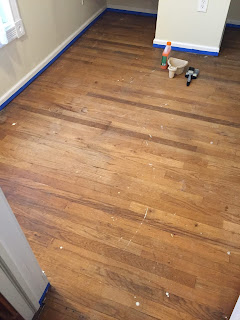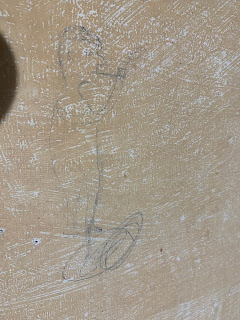This was a quick little project that wasn’t planned! This year we have noticed quite a
few carpenter bees around the two barns and at least one by the house. Generally,
bees are welcomed at History Acres since we are trying to grow things that require
pollination. However, we know these ones are of the destructive mindset. We had a
quick discussion that we should probably start to do something about them. We
didn’t notice them last year so perhaps their population increased or maybe we are
just being more aware. Hard to say but the need was here.
Interestingly enough, a friend posted on Facebook that they just made a cute
carpenter bee trap that was working. Heading out that day, they were buzzing
around again. I did a quick Google search to get some additional ideas and
knowledge of how they should be built. One of the first hits was this one. That looks
simple and easy to do with scrap wood sitting around the workshop. Here is how it went
together.
I didn’t have any 4x4 pieces but loads of 2x4 pieces. For each one, I took two pieces
about 6” in length and screwed them tightly together on one end, using 2” screws.
Then chopped the other end, as one unit, on a 45 to shed water. Putting a third 2”
screw in at the top on the opposite side to hold them securely together.
The block went into the vise in a position to drill all the holes needed without
repositioning. First was a 7/8” paddle bit into the bottom just about 3.5". Marking
the depth on the bit with a piece of masking tape. Next, I ran a ½” paddle, one hole
on each side, at an upward angle. Why an upward angle? Well that seems to be what
was done in others so I did it too! Sounds like it helps ensure the light which they head toward only
really comes from the jar so they can't escape. The holes were positioned in the center
about 2” up from the bottom.
Now, for the jar they will fall into. Grabbed an extra pint jar, seal, and ring. Punch one
hole with a nail in the center of the seal top and a hole to either side of that closer to
the edge. Use a ½” drill bit to enlarge the center hole which will line up with the
7/8” hole once attached. The metal is thin and doesn’t drill too cleanly, but I don’t
think the bees will mind. Drop the seal in into the ring, center it on the bottom over
the large hole, run a screw into each of the remaining punched holes to secure it.
All that is left is to screw on the jar, add a way to hang it, and hang it! I made three
fairly quickly and in less then 24 hours they seem to be working.
Hopefully, this is an easy way to knock back the wood-damaging bees on the
property. If you have the same need or want a quick diversion project, give this a go.
Modifying it to use what you have sitting around to make it nice and cheap.
















































